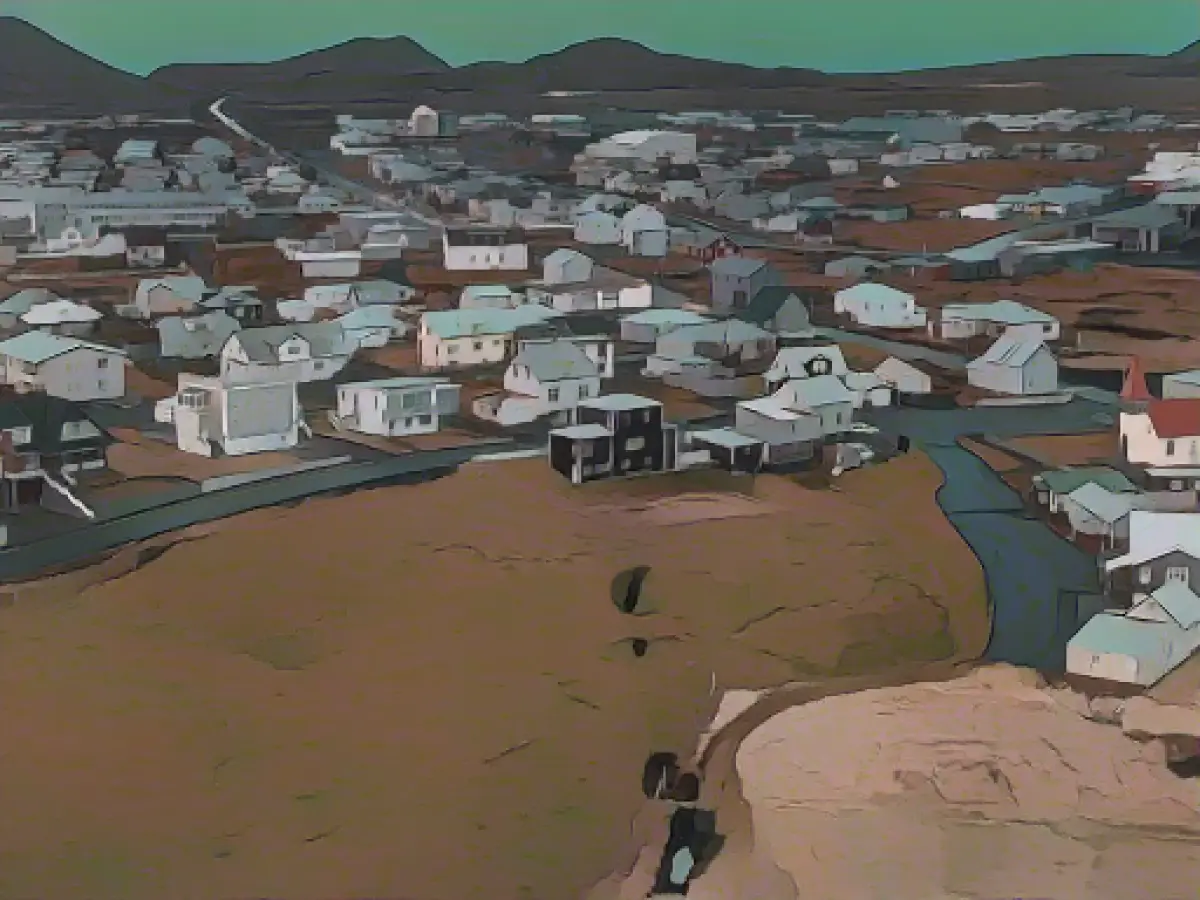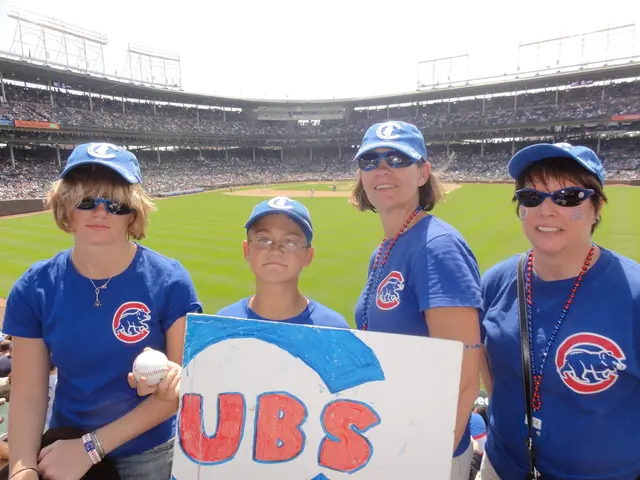Title: Ground-Shaking Uncertainty in Iceland: Volcanic Eruption Threatens Grindavík
The bustling town of Grindavík in Iceland's southwest has been thrown into a state of tension. The local authorities have pinpointed an implied eruption site for the molten rock from the magma tunnel, which has been showcasing seismic activity for weeks. According to the head of Iceland's Civil Protection and Emergency Management, Vídir Reynisson, the potential eruption spot lies approximately 2 kilometers north of the evacuated Grindavík, hinting at a likely fissure opening in the ground[1][2].
Looming danger and unique challenges
The proximity of the threatened area to the vital Svartsengi geothermal power plant, delivering heating to 30,000 people, makes protection a top priority for the authorities. Construction crews are making swift progress in constructing barriers to contain the escaping magma.
Magma veins stretch for about 15 kilometers beneath the Reykjanes peninsula, often traveling beneath the seabed off the coast[1]. The Icelandic Meteorological Office has registered around 460 earthquakes by midday, with the most powerful measuring 2.7 on the Richter scale[2].
Eruption odds and volcanologist perspectives
According to Reynisson, the magma persists in flowing into the tunnel, sitting 1,000 meters below the earth's surface. The likelihood of an eruption in the coming days is high but not quantifiable exactly, he noted[1][2]. If an eruption fails to occur, the probabilities of subsequent eruptions will decrease dramatically over time.
Volcanologist Olafur Gudmundsson from Uppsala University clarified that the tunnel is a natural result of the magma encountering resistance as it moves towards the earth's surface. The magma then spreads horizontally, potentially giving way again somewhere or solidifying[1][2].
A possible fissure volcano, familiar to the region around Grindavík, could be responsible for the eruption. These occur around Grindavík when a crack forms in the ground, causing lava to surge upward in a fountain, sometimes reaching impressive heights[1]. This type of eruption, however, is unlikely to mimic the explosive nature of Eyjafjallajökull's 2010 eruption due to the Grindavík's lava's distinct composition[1].
Tourist attractions and potential dangers
The captivating threat of volcanic eruptions might lure curious tourists, boosting local tourism. Nevertheless, authorities are exercising extreme caution and urging visitors to steer clear of the danger zone. While the potential eruption at Grindavík is unlikely to pose primary threats if people maintain safe distances, harmful sulfur dioxide emissions could pose health risks.
References:




